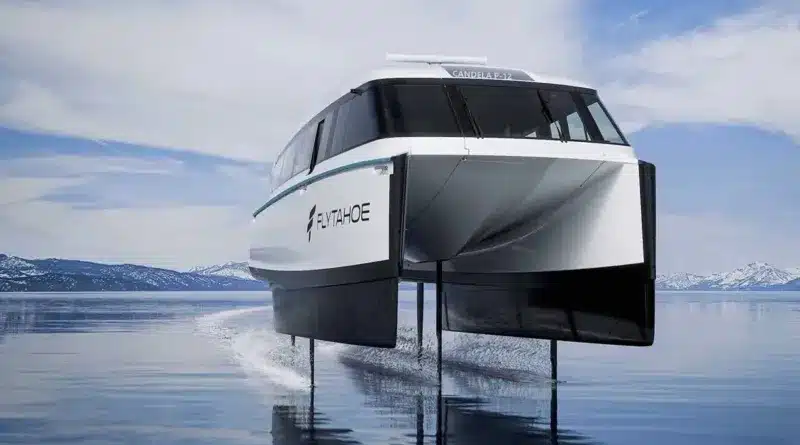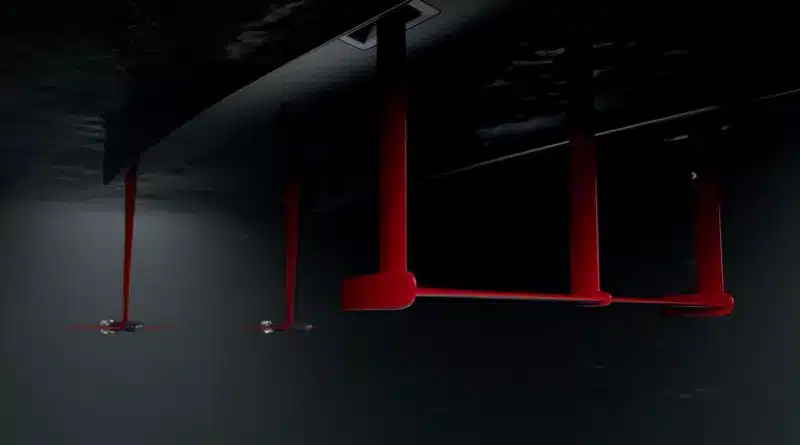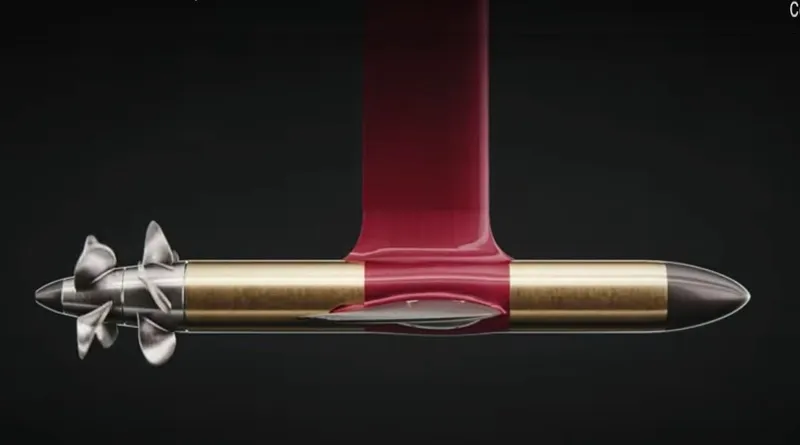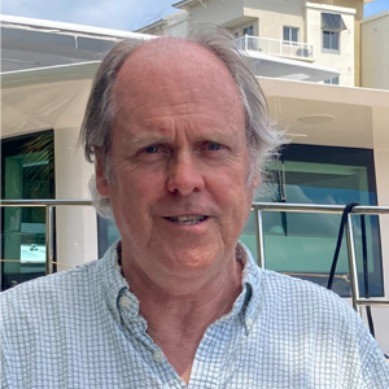Candela Launching 1st US Electric Hydrofoiling Ferry, Closes $40M in Funding
Candela has announced that it will be bringing the first US electric hydrofoiling ferry to the popular Lake Tahoe area straddling the Nevada/California border. This is just weeks after the company launched the world’s first electric hydrofoiling ferry service in Stockholm, Sweden. On top of that, they have just completed a $14M funding round (€13.3M) that brings total investment for 2024 to $40M (€38M).
“This is the dawn of a zero-emission era in waterborne transportation,” says Gustav Hasselskog, Candela’s founder and CEO. “Our technology enables operators to switch to sustainable electric vessels, providing shorter travel times, more frequent departures, enhanced comfort, and significantly reduced operational costs compared to traditional ships.”

The new investment, made during a challenging time for many companies, is a testament to Candela’s technology and the benefits it offers to both private and government transportation companies. The round was led by SEB Private Equity, a global Private Equity investor, with participation of existing investors EQT Ventures and KanDela AB.
”We are thrilled to partner with the Candela team,” says Anders Jцngard, Investment Director at SEB Private Equity. “We are impressed by Candela’s journey to bring cutting-edge innovation to serial production, we are committed to supporting Candela’s expansion for a more sustainable future, and we believe the transition to a fossil-free economy will unlock significant growth opportunities.”

100 electric hydrofoiling leisure boats
Candela recently marked the production of its 100th electric leisure hydrofoil vessel. The company is now aggressively targeting the rapidly expanding global market for electric waterborne transport, which is projected to reach $15.32 billion USD by 2032.
The recent investment funds will be used to scale up P-12 production to meet rising demand for the groundbreaking zero-emission vessels. The Stockholm service is demonstrating in real life that hydrofoiling ferries can halve commute times while also eliminating fossil fuel reliance in urban water transport.
Fleet operators around the world are paying attention. The company has closed a deal to electrify water transport for Saudi Arabia’s NEOM project and announced partnerships in Berlin, New Zealand, and now the US. It says more announcements are coming.

The most recent contract will bring high-speed electric hydrofoils to Lake Tahoe, a freshwater lake in the Sierra Nevada mountains of California and Nevada, renowned for its cobalt blue waters and spectacular mountain scenery. The area is a major tourist attraction, with winter and summer recreation and lakeside casino resorts on the Nevada side. Highways provide access to and within the area.
Cuts travel time in half
With Lake Tahoe attracting over 15 million outdoor enthusiasts year-round, road congestion has become an ever-increasing problem. Travellers often find themselves stuck in long car lines, especially in winter, due to road closures caused by heavy snowfalls. The lake is the second deepest in the US and never freezes over.
Candela is working with San Francisco company FlyTahoe to launch a service with a 30 passenger Candela P-12 designed with space for both skis and bikes. It will connect the lake’s north and south shores with a 30-minute trip that cuts the travel time in half compared to the 20,000 car journeys taking place every day.

The key to the P-12’s speed and environmental advantage is the advanced hydrofoiling technology. By lifting the boat’s hull out of the water on underwater wings, resistance and drag is significantly reduced and energy consumption is cut by 80% compared to conventional vessels.
That makes electric propulsion for a 30 seat vessel a viable proposition. The P-12 has a torpeedo shaped dual motor with contra-rotating propellers that enables the boat to cruise at 25 knots (≈ 30 mph / 50 kmh) for extended distances.
Energy consumption reduced by 80%
Another benefit is that hydrofoiling provides passengers with a smooth ‘magic-carpet-like’ ride thanks to a Flight Controller using sensors and software to balance the craft above the waves and amidst the winds. The foil’s angle of attack is adjusted 100 times per second. “It basically works like a jet fighter, which is constantly balanced using ailerons. The principle of the P-12 is the same, except our wings fly in water instead of air,” explains Hasselskog.
A detailed analysis by the Tahoe Transportation District already recognized ferries as the best solution to reduce traffic congestion along Lake Tahoe’s north-south route, citing lower costs per user and faster travel times than cars and buses. That analysis was conducted before the advent of the P-12 technology that makes the solution even more attractive and practical.
“This fusion of flight and electric technologies not only unveils a powerful new business opportunity with nearly 10x operational efficiency but also offers an unmatched customer experience of comfort and safety,” said Ryan Meinzer, Founder & CEO of FlyTahoe. “Even better, we’re not just moving people faster, we’ll be boosting socio-economic mobility by connecting the north and south of the lake.”

Editor/Publisher: Plugboats – The everything electric boats website